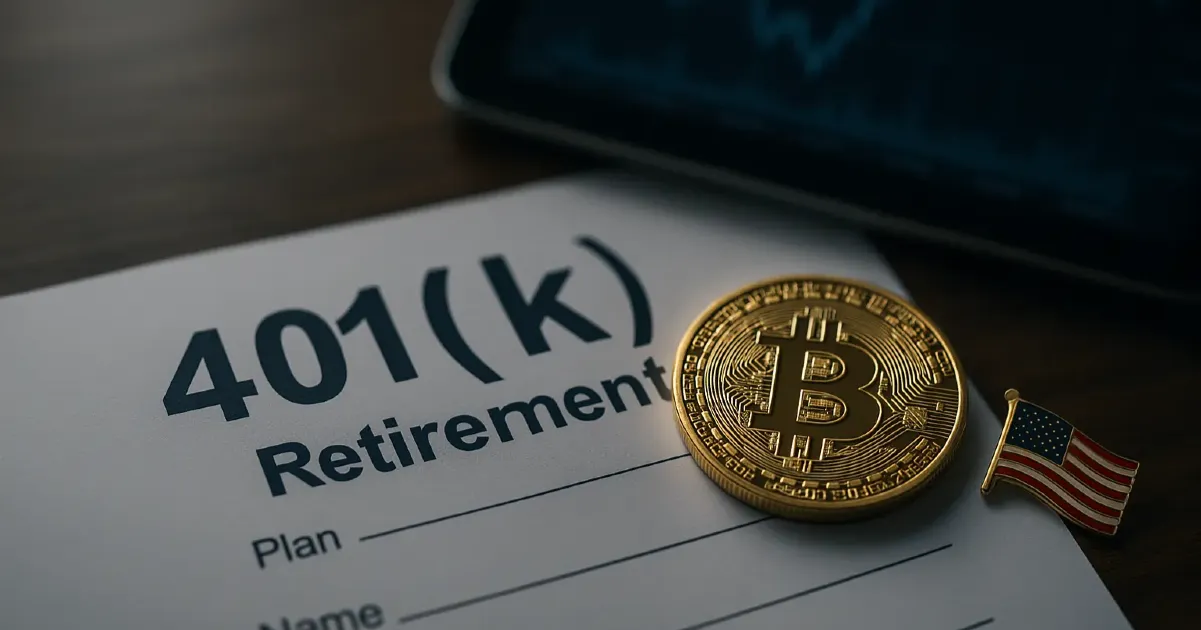SEC Chair Paul Atkins says cryptocurrencies could be included in 401(k) plans, but only if investor education and proper disclosures are prioritized.
In a rare moment of openness from a top financial regulator, U.S. Securities and Exchange Commission (SEC) Chair Paul Atkins has acknowledged that cryptocurrency may have a place in retirement portfolios if investors know what they’re getting into.
Speaking during a Bloomberg interview on Friday, Atkins didn’t shut the door on the idea of allowing crypto assets in 401(k) retirement plans. But he made one thing clear: investor education is the key to making that leap responsibly.
“Disclosure is everything,” Atkins said. “People need to understand exactly what they’re buying into.”
His comments come at a time when the conversation around crypto’s role in long-term investment strategies is heating up in Washington. President Donald Trump is reportedly preparing to sign an executive order that could broaden the investment options available within 401(k) plans. If approved, this shift might allow Americans to put their retirement savings into assets like Bitcoin or Ether, diversifying beyond traditional stocks and bonds.
A Window Into What’s Coming
Though Atkins didn’t confirm any timeline, he hinted at optimism about the administration’s stance.
“I look forward to whatever may come out from the president,” he noted.
This follows moves earlier this year by Senator Tommy Tuberville, who said in April he would reintroduce legislation aimed at loosening restrictions around 401(k) fiduciaries. Tuberville originally proposed the bill back in May 2022. The idea behind it is simple: give Americans more freedom to choose how their retirement funds are invested, including in digital assets.
What Exactly Is a 401(k)?
A 401(k) is a retirement savings plan sponsored by employers in the U.S., allowing employees to contribute a portion of their salary to tax-deferred investment accounts. Employers often match a portion of those contributions. Traditionally, these plans stick to conservative assets like index funds, mutual funds, and company stock.
But with digital assets becoming more mainstream, some are pushing for crypto to be part of the mix.
Fidelity Takes the Leap
Institutional giants are already testing the waters. Fidelity, one of the largest asset managers in the world, launched three crypto-enabled retirement accounts earlier this year. These include a traditional IRA and two Roth IRAs, one of which allows rollovers. Investors can use them to gain exposure to Bitcoin (BTC), Ethereum (ETH), and Litecoin (LTC), all with minimal fees.
With $5.9 trillion in assets under management, Fidelity’s move sent a clear signal that crypto might be inching toward wider adoption in retirement strategies.
Policy Shifts in Washington
At the policy level, there are changes too. In late May, the U.S. Department of Labor officially rescinded previous guidance from the Biden administration that had effectively discouraged employers from including crypto in 401(k) plans.
Labor Secretary Lori Chavez-DeRemer put it plainly:
“We’re rolling back this overreach. Investment decisions should be made by fiduciaries, not bureaucrats in D.C.”
This policy reversal, coupled with moves from the SEC and key financial firms, paints a picture of slow but steady progress toward integrating crypto into traditional finance.
Not Without Risks
Still, experts warn that including crypto in retirement portfolios won’t be for everyone. Digital assets are volatile and lack the historical stability of equities or bonds. Education and transparent communication will be essential if these investment options are to be used responsibly.
Atkins’ measured tone reflects that caution. While open to the idea, he emphasized that the SEC’s role is to protect investors, not to greenlight risky bets without proper disclosure.
For now, the door is open, but it comes with a warning sign: Know what you’re investing in.






